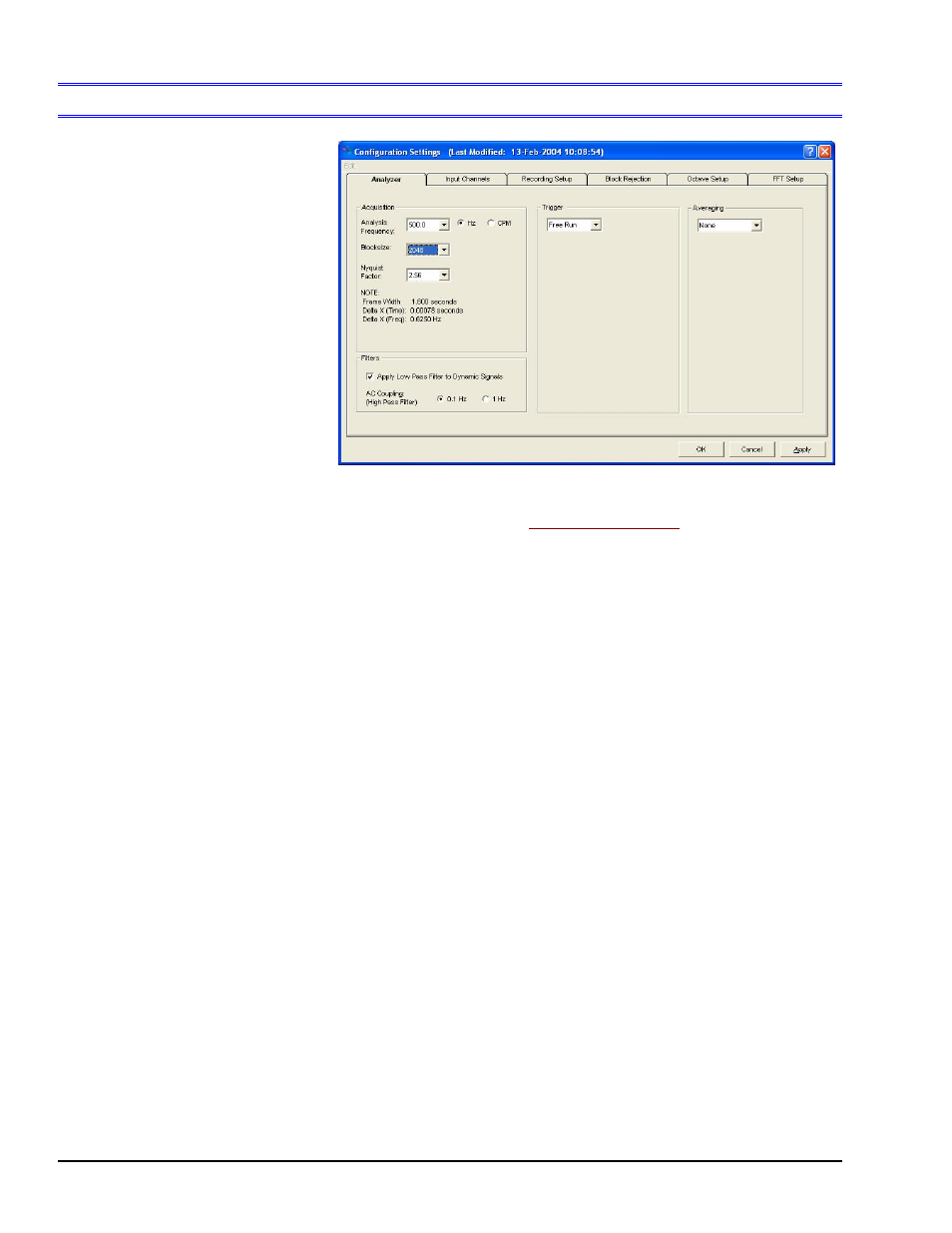Analyzer tab, Analyzer tab …… 4-4, Analyzer…… 4-4 – Measurement Computing eZ-PostView rev.2.0 User Manual
Page 82: Configuration

4-4 Edit Menu
969795
eZ-Analyst
Edit Menu
> Configuration >
Analyzer Tab
The Analyzer Tab
consists of four
panels:
Acquisition
Filters
Trigger
Averaging
Analyzer Tab
Edit Menu > Configuration >
Analyzer Tab:
Acquisition Panel
The Acquisition Panel provides a means of setting Analysis Frequency and Blocksize. A note
regarding the relationship of Analysis Frequency and Blocksize, to Frame Width and Delta X,
is located on the preceding page.
Analysis Frequency: This section of the Acquisition Panel is used to set the maximum
bandwidth for analysis. Frequency components above the Analysis Frequency setting will
result in aliasing errors in the data. The bandwidth measurement can be set for Hertz (Hz) or
Cycles Per Minute (CPM) by use of radio buttons. Note that the processing time for a selected
blocksize is fixed by CPU speed.
Increasing the analysis frequency results in:
(a) the hardware streaming packets of data more frequently to the software
(b) a greater demand placed on the software to process the data blocks, and
(c) less time between data blocks available for task performance.
Blocksize: This section of the Acquisition Panel is used to set the number of data points in a
frame or block of data. Acceptable blocksizes range from 128 to 16384 data points.
Blocksize can be viewed as chunks, or packets of data, that move through eZ-Analyst’s
software algorithms. As blocksize increases, the amount of data increases, the time required
to acquire a block of data increases, and the amount of space required to save the data
increases.
Nyquist Factor: A user-selected factor, for which waveform frequency is multiplied by, to
ensure that a sampled analog signal is accurately reconstructed. eZ-Analyst has three
selectable Nyquist Factors: 2.56, 5.12, and 10.24. The 2.56 Nyquist Factor should be used
in most cases as it is the most efficient in FFT Analysis. However, if you suspect signal
aliasing, a Nyquist factor of 5.12 or 10.24 should be selected. Higher Nyquist Factors result
in more time data in the FFT Analysis. Note that the maximum available Analysis Frequency
is reduced for higher Nyquist Factors.
